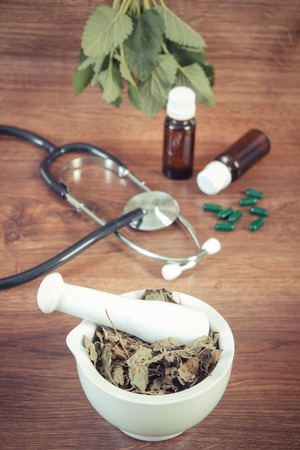1. Understanding Dark Spots: Pehli Nazar Mein
Dark spots, or hyperpigmentation, are something most of us in India have heard about since childhood. Whether it’s our nani pointing out a ‘daag’ on someone’s cheek, or friends whispering about ‘spots’ after a sunny cricket match, these skin marks are part of daily conversation and concern. Across the country, people use various terms—‘daag’, ‘dhabbey’, ‘spots’, even ‘rang ka farq’—reflecting how deeply hyperpigmentation is woven into our collective consciousness. The emotional impact is real: from mothers worrying over their daughters’ marriage prospects to young men feeling self-conscious during job interviews, dark spots can affect confidence and self-esteem within Indian families. Medical reports reveal that the high melanin content in Indian skin, combined with our love for the outdoors and traditional skincare remedies, makes us more prone to hyperpigmentation than many realize. This first glance—pehli nazar mein—at dark spots isn’t just about appearance; it’s about the social and cultural weight they carry in everyday Indian life.
2. Daily Indian Lifestyle: Root Causes Revealed
Living in India means being surrounded by vibrant traditions, spicy aromas wafting from the kitchen, and the unwavering wisdom of our ‘nani-maa’. But have you ever wondered how these everyday experiences might be linked to those stubborn dark spots on your skin? Recent medical reports are shining a light on how Indian lifestyle habits, both cultural and environmental, play a significant role in triggering hyperpigmentation. Lets dive into the core elements of our daily routines that could be behind those pesky marks.
Sun Exposure: The Relentless Indian Sun
The Indian sun is both a blessing and a challenge. With most cities experiencing high UV index levels year-round, unprotected exposure—whether during morning temple visits or afternoon market strolls—can accelerate melanin production, leading to dark spots. Despite age-old advice about using scarves or dupattas as makeshift shields, many still underestimate the power of proper sunscreen.
Spicy Food and Skin Sensitivity
Indian cuisine is famous for its spices—chilli, turmeric, mustard seeds—each believed to boost health in unique ways. However, studies reveal that excessive consumption of spicy food can trigger skin inflammation or exacerbate existing skin conditions, contributing to post-inflammatory hyperpigmentation (PIH). While not everyone’s skin reacts the same way, those prone to acne or allergies may notice a pattern between what’s on their plate and new spots appearing.
How Spices & Food Habits May Impact Skin
| Common Food Habit | Potential Impact on Skin | Cultural Context |
|---|---|---|
| Frequent Spicy Meals | Can increase heat in body; sometimes leads to acne flare-ups and PIH | Biryani, curries at family gatherings |
| Dairy Consumption | May worsen acne in some individuals; possible link to pigmentation marks | Lassi, paneer in daily diet |
| Deep-fried Snacks | High oil intake may clog pores, increasing risk of blemishes and spots | Samosa, pakora during tea-time |
Nani-Maa Home Remedies: Double-Edged Sword?
No discussion about Indian skincare is complete without mentioning home remedies passed down generations. Turmeric masks for glow, lemon juice for lightening—everyone swears by something. While some ingredients like aloe vera are scientifically proven to soothe the skin, others can irritate sensitive skin types or even cause photoreactions when exposed to sunlight.
Popular Remedies & Their Possible Effects:
| Home Remedy | Intended Benefit | Possible Drawback |
|---|---|---|
| Lemon Juice Application | Lightens dark spots naturally | May cause burns or irritation if used undiluted; increases photosensitivity |
| Turmeric Paste | Anti-inflammatory & brightening effect | Might stain skin yellow; can irritate certain skin types with overuse |
| Aloe Vera Gel | Soothe & heal irritated skin; fade marks gradually | Generally safe but rare allergic reactions possible |
The intersection of modern medical insight and traditional Indian routines reveals that our lifestyle choices—right from what we eat to the ancestral advice we follow—have a profound impact on our skin health. Understanding these triggers is the first step toward making informed changes that keep our complexion radiant and spot-free.

Cultural Perspectives: Beauty Standards & Social Attitudes
When it comes to skin and appearance, Indian society has a unique set of standards deeply rooted in its cultural fabric. The preference for fair skin is not just a modern-day phenomenon but one that finds its echoes in history, art, and even mythology. From ancient Ayurvedic texts to wedding rituals and matrimonial ads, the association of light skin with beauty, prosperity, and success is hard to ignore. Bollywood—the heartbeat of Indian pop culture—often reinforces these ideals. Iconic actresses and actors with luminous complexions dominate the silver screen, setting benchmarks that many aspire to achieve. Songs, dialogues, and even product endorsements further amplify the desirability of fairness while subtly sidelining those with darker tones or visible dark spots.
These influences trickle down into everyday life. Family conversations about skin colour are common during childhood and adolescence. A grandmother might gently suggest home remedies like haldi (turmeric) packs or besan (gram flour) masks to lighten dark patches or reduce spots before an important event. At social gatherings, relatives may comment on a child’s complexion or dark spots with casual familiarity, often without malice but leaving a lasting impact. Friends swap stories about their mothers’ recipes—lemon juice for lightening or aloe vera for healing—and share anxieties about how dark spots might affect marriage prospects or job interviews.
Such narratives create an environment where the pursuit of fair, spotless skin becomes a family project rather than just an individual concern. The ripple effects are clear: people invest heavily in cosmetic treatments, fairness creams, and traditional remedies in search of flawless skin. Medical reports now highlight how these practices sometimes lead to misuse of over-the-counter products and delayed professional care for underlying conditions. In this context, dark spots are not just a dermatological issue; they are woven into the social and psychological tapestry of Indian life—a reflection of collective beliefs shaped by history, cinema, and familial love.
4. Medical Reports: What Indian Doctors and Studies Say
When it comes to dark spots and hyperpigmentation, Indian dermatologists and medical researchers have been at the forefront of understanding how unique lifestyle factors in India affect skin health. Insights from leading clinics such as Kaya Skin Clinic, Dr. Batra’s, and Apollo Hospitals reveal that hyperpigmentation is one of the most common concerns among their Indian patients. According to Dr. Rashmi Shetty, a renowned dermatologist based in Mumbai, excessive sun exposure due to the tropical climate, along with pollution and dietary habits rich in spices and oils, contribute significantly to the incidence of dark spots among Indians.
Insights from Recent Indian Medical Studies
Recent studies published in journals like the Indian Journal of Dermatology highlight that melasma, post-inflammatory hyperpigmentation (PIH), and age-related lentigines are highly prevalent among individuals with Fitzpatrick skin types IV-VI—skin tones commonly found in India. These studies also suggest a genetic predisposition towards increased melanin production, making Indians more susceptible to pigmentation issues.
Main Causes Identified by Experts
| Cause | Description |
|---|---|
| Sun Exposure | Intense UV rays trigger excess melanin production, especially for those working outdoors or traveling daily. |
| Pollution | Particles in urban air can irritate skin, causing inflammation and pigmentation. |
| Hormonal Changes | Common during pregnancy or due to contraceptive use; often results in melasma. |
| Poor Skincare Habits | Irregular cleansing, harsh products, or skipping sunscreen aggravate dark spot formation. |
Treatments Recommended by Indian Dermatologists
Indian dermatologists recommend a blend of advanced treatments and culturally accepted home remedies. Chemical peels with glycolic acid or salicylic acid are popular in cities like Bangalore and Delhi. Topical creams containing kojic acid or vitamin C are widely prescribed for mild cases. There’s also a growing trend towards laser therapies for stubborn pigmentation—though doctors caution about possible side effects on darker skin tones.
For those seeking traditional approaches, ingredients like turmeric (haldi), sandalwood (chandan), and aloe vera continue to be suggested by both modern practitioners and Ayurvedic specialists. The table below summarises some common treatments:
| Treatment | Usage/Notes |
|---|---|
| Chemical Peels | Effective for superficial spots; must be administered by certified professionals. |
| Topical Creams (Kojic Acid, Vitamin C) | Daily application; suitable for mild pigmentation. |
| Laser Therapy | Best for deep pigmentation; requires multiple sessions and expert supervision. |
| Traditional Remedies (Turmeric, Aloe Vera) | Mild effects; popular as preventive care or adjunct therapy. |
This strong focus on evidence-based solutions blended with local wisdom reflects the uniquely Indian approach to managing dark spots—a challenge shaped by both genetic heritage and everyday environmental realities.
5. Home Treatments & Traditional Wisdom: Facts vs. Myths
For generations, Indian households have relied on traditional remedies to tackle skin concerns like dark spots. The classic ubtan—a blend of turmeric, gram flour, milk or curd—remains a staple in many North Indian homes, especially during pre-wedding rituals. Turmeric (haldi) is celebrated for its anti-inflammatory and skin-brightening properties, often passed down as wisdom from mothers and grandmothers. Similarly, lemon juice is commonly applied for its supposed bleaching effect, while sandalwood paste and aloe vera gel are favourites in South Indian routines.
But how do these time-honoured practices hold up against medical evidence?
Turmeric Ubtan: More Than a Ritual?
Modern dermatologists acknowledge that turmeric contains curcumin, an active compound known for its anti-inflammatory benefits. Some small-scale studies suggest it can reduce hyperpigmentation over time when used consistently. However, experts warn that home-made mixtures might not be potent enough for stubborn dark spots and can sometimes cause irritation, especially if not properly formulated.
Lemon Juice: A Double-Edged Sword
Lemon juice is rich in vitamin C and citric acid, which theoretically help lighten pigmentation. Yet, dermatologists caution against direct application on the skin. Lemon’s acidity can disrupt the skin barrier, leading to increased sensitivity or even chemical burns—especially under the harsh Indian sun. Medical advice strongly suggests patch testing and preferring clinically formulated vitamin C serums instead.
Sandalwood, Aloe Vera & More: Gentle Soothers?
Sandalwood paste and aloe vera are lauded in Ayurveda for their cooling and healing effects. While both ingredients are generally gentle and may soothe inflammation or irritation, there is limited scientific data backing their efficacy in fading established dark spots. They might be helpful as supportive care but not as primary treatments.
The Bottom Line: Tradition Meets Science
Many Indian home remedies offer comfort and a sense of cultural connection but may fall short in delivering dramatic results for dark spots. Dermatologists interviewed in recent medical reports recommend combining these practices with proven treatments like prescription creams or dermatologist-approved serums for effective management of pigmentation issues.
6. Modern Solutions: Treatments and Changing Attitudes
In the bustling metro cities of India—Mumbai, Delhi, Bengaluru, and beyond—the approach to treating dark spots has evolved dramatically over the past decade. Once limited to home remedies passed down through generations, today’s Indian urbanites have access to an impressive array of modern solutions.
Laser Treatments and Dermatological Procedures
Laser technology is now a common sight in skin clinics across Indian metros. Clinics in areas like Bandra or Indiranagar advertise advanced laser therapies that target hyperpigmentation with precision. These treatments are especially popular among young professionals who seek quick results with minimal downtime. While cost remains a barrier for some, growing demand is gradually making these procedures more accessible.
Creams and Over-the-Counter Products
The market for creams addressing dark spots has exploded in recent years. International brands share shelf space with Indian favourites like Vicco Turmeric and Himalaya Herbals. Products containing ingredients such as niacinamide, vitamin C, and licorice extract are frequently recommended by dermatologists. The local chemist shops in Mumbai or Kolkata stock a dizzying variety of these creams, catering to every budget and skin type.
Ayurveda Meets Modern Science
A unique trend is the fusion of Ayurveda with modern dermatology. Many Indians still trust herbal formulations, but they now expect scientific validation alongside traditional wisdom. Brands like Biotique and Forest Essentials combine ancient ingredients like manjistha and haldi with clinically tested actives—a blend that resonates well with both older generations and millennials.
Shifting Perceptions and Social Change
There is also a noticeable shift in attitudes toward dark spots and broader notions of beauty. Social media campaigns and influencers encourage acceptance of natural skin texture, including pigmentation. While fairness creams remain popular, there’s a growing counter-movement that challenges colourism and the stigma around “imperfections.” Young Indians increasingly prioritise healthy skin over lighter skin, seeking holistic care rather than just cosmetic fixes.
The journey from turmeric masks to laser clinics reflects not only technological progress but also changing mindsets in Indian society. As medical reports highlight effective treatments—and as conversations around beauty become more inclusive—urban India stands at the crossroads of tradition and innovation in tackling dark spots.
7. Wrapping Up: Living with Dark Spots in India
For many of us growing up in India, skin stories are woven into our daily lives. I remember my grandmother gently reminding me that “dusky is beautiful,” even when relatives would offer unsolicited home remedies for my dark spots. Over time, Ive realised that every mark and spot on my skin tells a tale—sometimes of sun-drenched afternoons at a cricket field, sometimes of late-night study sessions fueled by chai. Embracing this uniqueness has been a journey. For some, like my friend Aditi from Pune, dark spots were a source of self-consciousness until she saw Bollywood actresses confidently flaunting their natural skin tones. She told me, “It felt like someone finally understood that beauty isnt about perfection.”
Skin doctors across India now echo this sentiment, urging us to view our skin health holistically. Dr. Meera Nair, a renowned dermatologist from Kochi, advises, “If you wish to treat your dark spots, always consult a qualified professional before trying any treatment or home remedy you find online. Indian skin reacts differently due to our melanin content and climate exposure.” She also highlights the importance of sunscreen—even on cloudy days—and recommends gentle skincare routines suited for humid or dry regions.
However, acceptance is equally valid. Many young Indians are now championing campaigns celebrating real skin and rejecting unrealistic fairness standards. If you choose to accept your dark spots as part of your identity, know that you’re not alone—thousands are sharing their journeys on social media platforms, helping others feel seen and understood.
At the end of the day, living with dark spots in India is deeply personal. Whether you decide to treat them or embrace them as part of your story, remember that confidence shines brighter than any blemish. Honour your skin’s journey—it’s uniquely yours.

